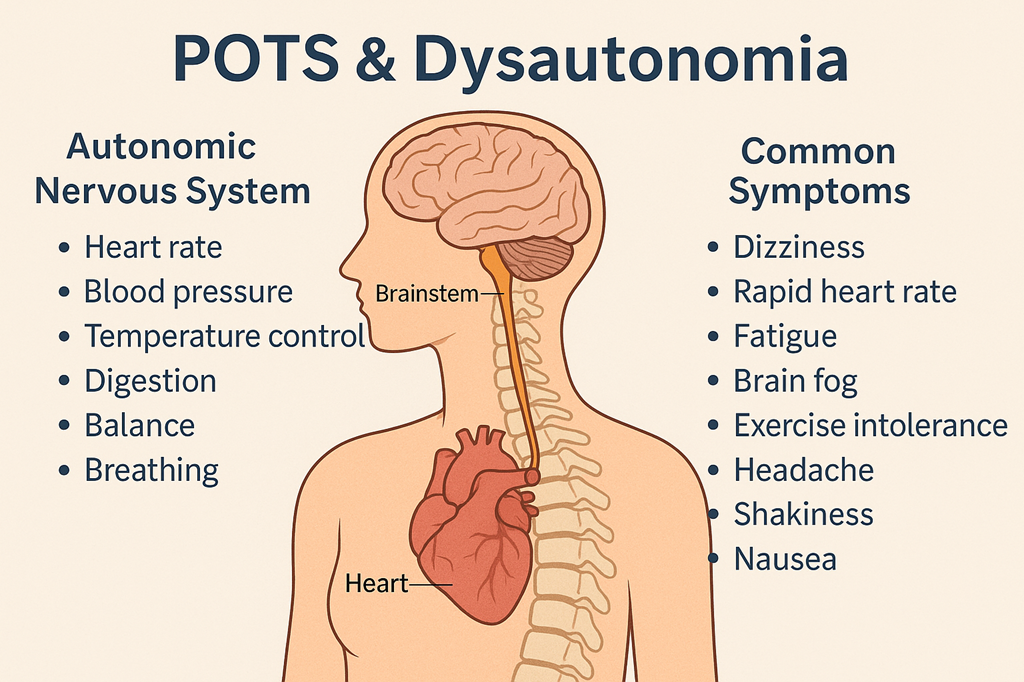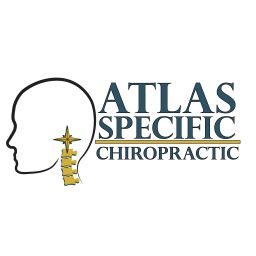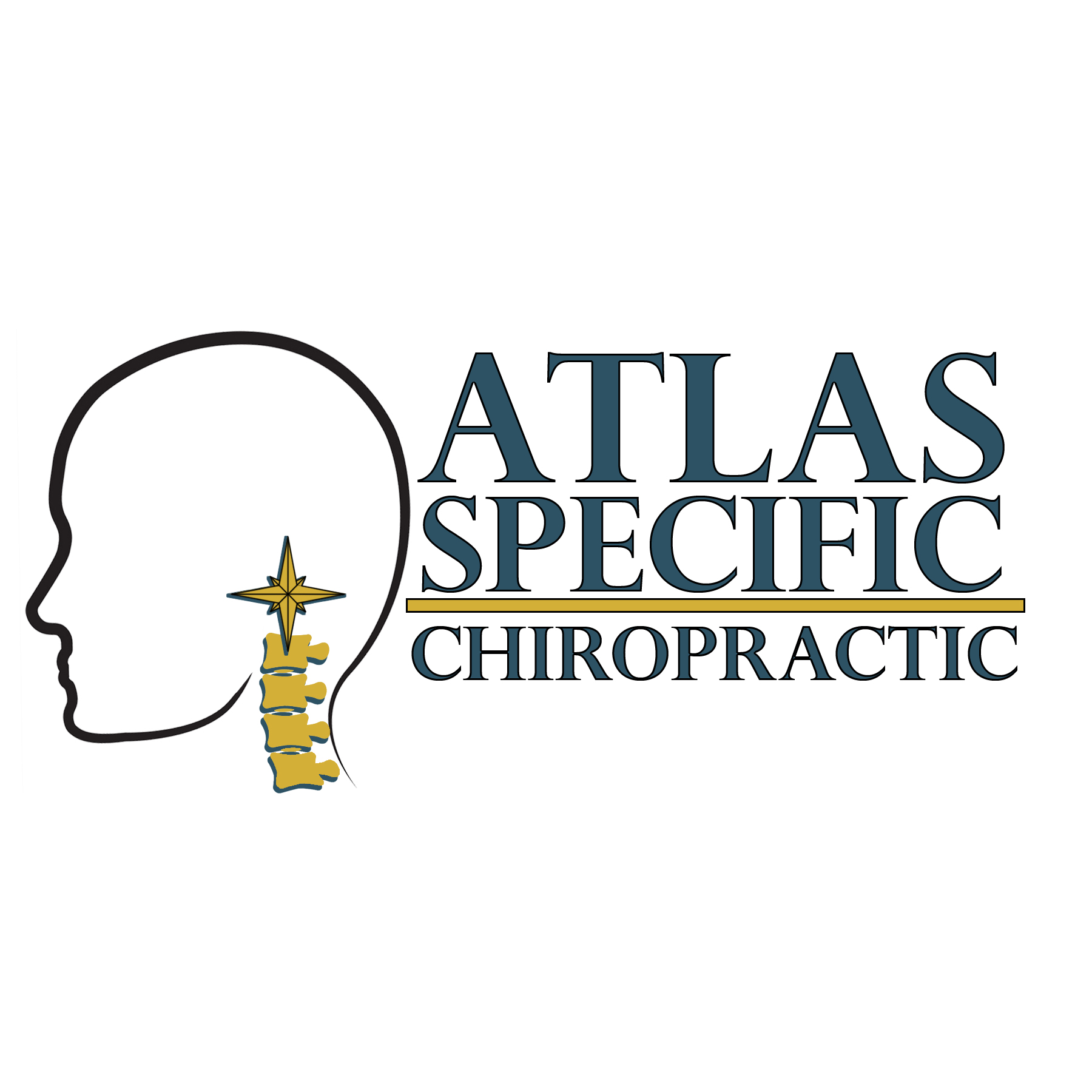
POTS & Dysautonomia
Restoring Autonomic Nervous System Balance Through Upper Cervical Care
Understanding POTS & Dysautonomia
POTS (Postural Orthostatic Tachycardia Syndrome) and dysautonomia are conditions that affect the autonomic nervous system (ANS) — the part of your nervous system responsible for automatic functions like heart rate, blood pressure, digestion, temperature regulation, and more.
People with POTS or dysautonomia often experience:
-Rapid heart rate when standing
-Dizziness or lightheadedness
-Fatigue or “energy crashes”
-Brain fog or trouble concentrating
-Temperature intolerance
-Head pressure or headaches
-Nausea or digestive issues
-Ringing in the ears
-Shakiness or internal “vibrations”
-Exercise intolerance
-Anxiety-like symptoms (but not caused by anxiety)
For many, these symptoms come and go, fluctuate day-to-day, and can be confusing — even frightening. Many patients go years without a proper diagnosis, and even after diagnosis, they may struggle to find meaningful relief.
What Causes POTS and Dysautonomia?
While POTS and dysautonomia may have multiple contributing factors, one of the most overlooked is dysfunction in the upper cervical spine, especially the atlas (C1) and axis (C2) vertebrae.
These areas sit at the base of the brain and surround the brainstem, which is the command center for the autonomic nervous system.
The brainstem regulates:
-Heart rate
-Blood pressure
-Breathing patterns
-Digestion
-Temperature control
-Balance and coordination
-Stress response
Even slight misalignment in this region can disrupt communication between the brain and body, contributing to or worsening dysautonomia symptoms.
The Upper Cervical Connection
When the atlas or axis shifts out of its proper position (due to injury, posture, stress, illness, or even growth changes), it can:
-Irritate the structures of the upper neck
-Disrupt blood and cerebrospinal fluid flow
-Increase sympathetic (fight-or-flight) activation
-Decrease parasympathetic (rest-and-digest) function
-Trigger dizziness, tachycardia, digestive symptoms, and brain fog
-Make standing or walking more difficult
-Limit the body’s ability to adapt to stress
This imbalance between sympathetic and parasympathetic systems is a hallmark of dysautonomia — and correcting upper cervical misalignment may help restore balance.
Patients with POTS often describe feeling like their body is “stuck in overdrive.” Upper cervical care helps the body shift back toward calm, stable, and regulated function.
Why Many Traditional Treatments Don’t Fully Resolve Symptoms
Patients with POTS or dysautonomia often try:
-Medications for heart rate or blood pressure
-Electrolyte supplementation
-Increasing salt or fluids
-Compression garments
-Physical therapy
-Migraine medications
-Beta blockers
-Anti-anxiety medications
-Blood volume expanders
-Exercise protocols
-Dietary changes
These approaches can provide partial relief — but they rarely address the neurological control center of the autonomic nervous system.
If the nervous system remains irritated, symptoms persist or return.
How Upper Cervical Chiropractic Helps POTS & Dysautonomia
At Atlas Specific Chiropractic, we use a precise, scientific, and gentle approach to correct atlas/axis misalignments and restore normal neurological function.
Our process includes:
✔ Functional Neurological Scans
Tytron thermography identifies abnormal nerve patterns linked to autonomic imbalance.
✔ 3-View Precision X-Rays
We measure atlas/axis alignment down to 1/100th of a degree and millimeter, allowing for exact correction planning.
✔ Gentle AHKC (Advanced HIO Knee-Chest) Correction
A precise adjustment tailored to your anatomy — with no twisting, cracking, or popping — to reduce pressure on the nervous system and restore normal ANS communication.
✔ Post-Adjustment Scans
We confirm that the nervous system is responding positively and stabilizing over time.
Many patients report improvement in:
-Dizziness & lightheadedness
-Heart rate steadiness
-Brain fog & cognitive clarity
-Energy levels
-Temperature regulation
-Digestion
-Head and neck pressure
-Standing tolerance
-Motion sensitivity
Upper cervical care doesn’t treat POTS directly — it supports the system that controls the symptoms.
Who Is a Good Candidate for Upper Cervical Care?
You may benefit from upper cervical evaluation if you:
-Have dizziness, syncope, or rapid heart rate when standing
-Experience chronic fatigue or brain fog
-Have POTS triggered after an illness (e.g., viral infections, COVID)
-Have a history of concussion, whiplash, or neck injury
-Have headaches or migraines with your symptoms
-Have GI symptoms along with autonomic issues
-Have symptoms aggravated by stress or posture
-Have tried multiple specialists without answers
-Feel like your “wiring” is off or overly sensitive
These patterns strongly suggest nervous system involvement.
Taking the Next Step Toward Stability
Living with POTS or dysautonomia is overwhelming — but there is hope when the nervous system begins to regulate again.
Upper cervical care may help restore control, calm, and balance to your daily life.
At Atlas Specific Chiropractic in Hiawatha, IA, we help patients throughout the Cedar Rapids area find lasting relief by addressing the root neurological imbalances, not just the symptoms.
📞 Call (319) 343-8540 or schedule your first visit today to discover how upper cervical care can support your healing.
Open Hours
Monday, Tuesday, Thursday
9:00 - 6:00
Wednesday
12:00 - 6:00
friday
9.00 - 2.00
© Atlas Specific Chiropractic | Powered by Webflow.




